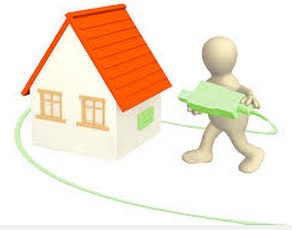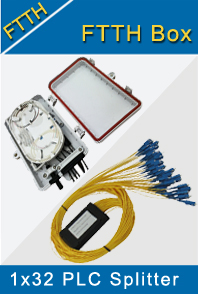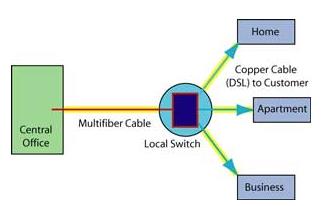-

- Sopto Home
-

- Special Topic
-

- FTTH Knowledge
-

- Why “fiber connections” have an attraction for the CATV provider
FTTH Knowledge
- Solving the FTTH Rollout Problem in Multiple Dwelling Units
- WDM PON Introduction FAQ
- A Simple Overview of Optical Power Meter
- ODN is based on PON FTTH Optical Cable Network of the Device
- Using an OTDR to be an Expert in Fiber Link Testing
- How FTTH Broadband Works?
- Connections among Fiber Terminal Boxes & Patch Cables & Pigtails
- Easy to Install a Fiber Terminal Box
- What is Arrayed Waveguide Grating?
SOPTO Special Topic
Certificate



Guarantee
Except products belongs to Bargain Shop section, all products are warranted by SOPTO only to purchasers for resale or for use in business or original equipment manufacturer, against defects in workmanship or materials under normal use (consumables, normal tear and wear excluded) for one year after date of purchase from SOPTO, unless otherwise stated...
Return Policies
Defective products will be accepted for exchange, at our discretion, within 14 days from receipt. Buyer might be requested to return the defective products to SOPTO for verification or authorized service location, as SOPTO designated, shipping costs prepaid. .....
Applications

Sopto supply the best FTTH solutions for your network!
SOPTO Products
- Fiber Optic Transceiver Module
- High Speed Cable
- Fiber Optical Cable
- Fiber Optical Patch Cords
- Splitter CWDM DWDM
- PON Solution
- FTTH Box ODF Closure
- PCI-E Network Card
- Network Cables
- Fiber Optical Adapter
- Fiber Optical Attenuator
- Fiber Media Converter
- PDH Multiplexers
- Protocol Converter
- Digital Video Multiplexer
- Fiber Optical Tools
- Compatible
Related Products
Performance Feature
FTTH Knowledge
Recommended

Why “fiber connections” have an attraction for the CATV providers
A number of factors are increasing the interest among telecommunications providers in offering the “triple play” services of voice, video and high-speed data access. Most importantly, subscribers are finding a growing number of applications that drive their desire for higher bandwidth, including Internet access, interactive games, and video delivery. Network providers are anxious to provide new services that increase their revenue opportunities. This is especially important as incumbent telephone network providers compete with wireless mobile providers and VoIP for voice service revenues.
In North America and some other regions, community access television (CATV) providers (sometimes called “cable” providers) are also competing to offer subscribers triple play services over their cable networks. In some cases, national or regional governments have been strongly encouraging and subsidizing a triple play service-capable infrastructure.

FTTH Basic Principle
The resulting potential regional/national advantages could include the use of telecommuting to reduce transportation infrastructure costs, improving the workforce skill level through distance learning, and creating a more desirable location in order to attract new companies and workers to the region.
Although there has been interest in the potential of triple play services for over 25 years, we are finally reaching the point where there are enough subscriber applications to create adequate demand for the services, and the technology has matured to the point where it is becoming cost effective to deliver them.
Telephone and CATV networks both have historically relied on copper wires to connect through the “Last mile” to their subscribers.
The coaxial cable of the CATV companies has superior bandwidth capabilities relative to the twisted pair wiring from telephone companies, and some telephone companies have considered deploying their own coaxial cable networks. However, the coaxial cable must be shared by many subscribers in order to be economical.
Also, most of the coaxial cable’s bandwidth is divided into channels for downstream broadcast video channels, leaving limited bandwidth available for broad-band upstream traffic and services such as video on-demand (VoD).
Clearly, the most flexible and “future-proof” medium is fiber, with its virtually unlimited bandwidth availability. For telephone network providers, fiber connections are attractive as a way to leapfrog the capabilities of the CATV providers.
Related Knowledge:
Three Fiber Access Network Architectures
FTTH Development Background and history
International Fiber-to-the-home Broadband Connection Development



